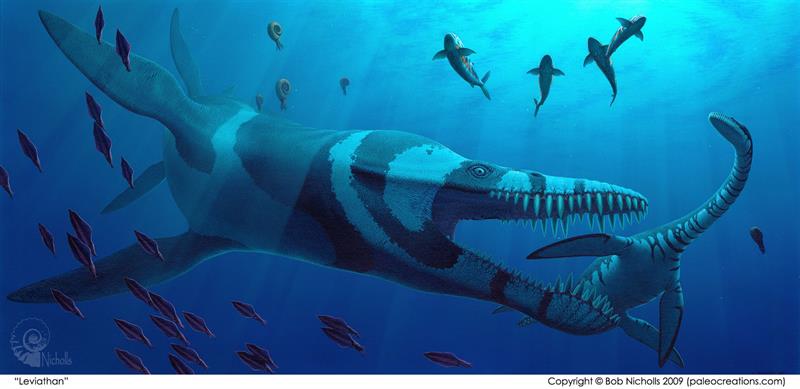Plesiosaurs are unique among vertebrates because they used two near-identical pairs of flippers to propel themselves through the water – whereas other animals, including existing species such as turtles and sea lions, have differently constructed front and back sets, using the front ones mainly for thrust and the back ones for steering.
Plesiosaurs achieved near-global distribution in the world’s oceans during the Mesozoic Era, 220-66 million years ago. However, the propulsion dynamics of the plesiosaur have long been debated, with various theories proposed since the 1950s.
Colin Palmer, of the University of Bristol’s School of Earth Sciences, added: “Our results resolve a long-standing debate about the mechanics of plesiosaurs swimming and demonstrate the effectiveness of the tandem flipper arrangement. The thrust and efficiency enhancements this provided must have contributed to the evolutionary success of these animals.”
The researchers carried out a series of water tank experiments using 3D printed flippers attached to a robotic mechanism to mimic a range of movement combinations. They studied plesiosaur fossils and X-rays of existing flipper-powered animals to determine the shape of the large, wing-like flippers and the range of motions the robotic mechanism would need to reproduce.
The team found that swirling movements in the water created by the front flipper allowed for a major increase in thrust and efficiency by the back flipper (increasing thrust by up to 60% and efficiency up to 40%) – strongly suggesting that plesiosaurs would have used all four flippers to propel themselves through the water.
Luke Muscutt, a PhD student in Engineering and the Environment and the University of Southampton, explained: “Our observations of tandem flipper systems such as the plesiosaur’s might also eventually have a real-world application – as a propulsion system for undersea vehicles, for instance, that could help make them more manoeuvrable, efficient and quieter.”












